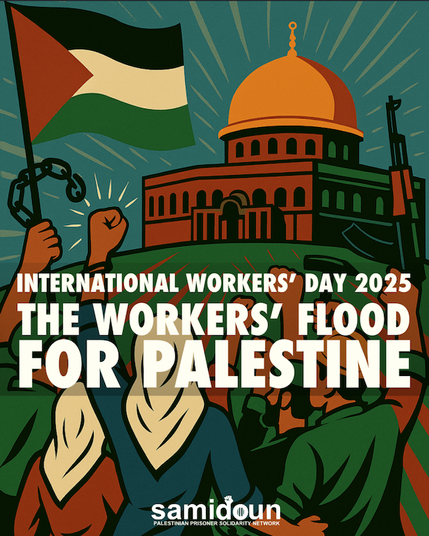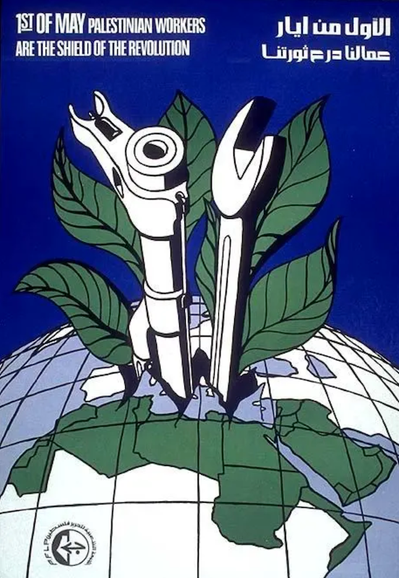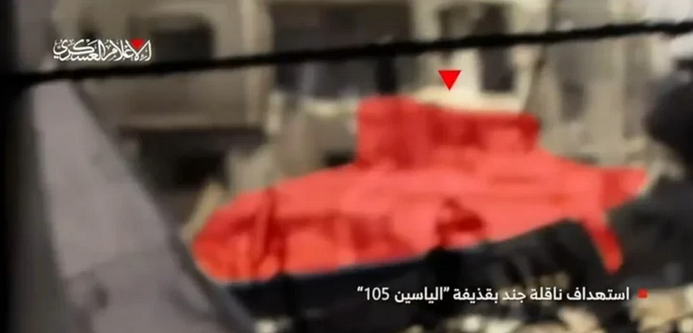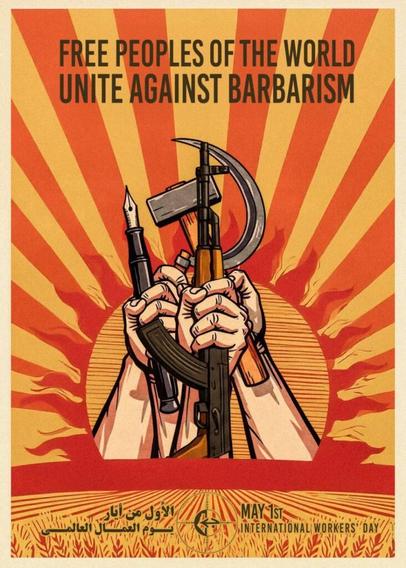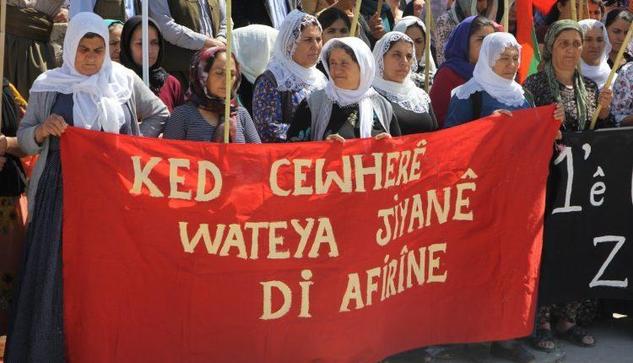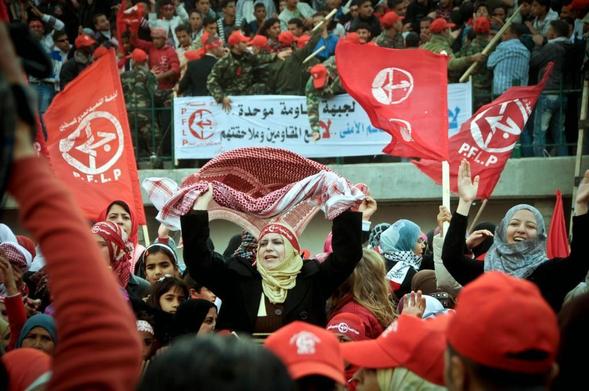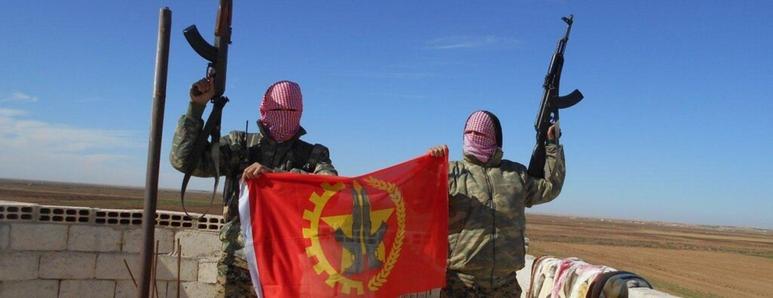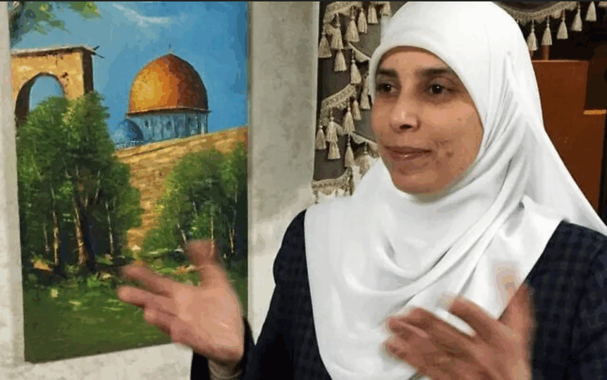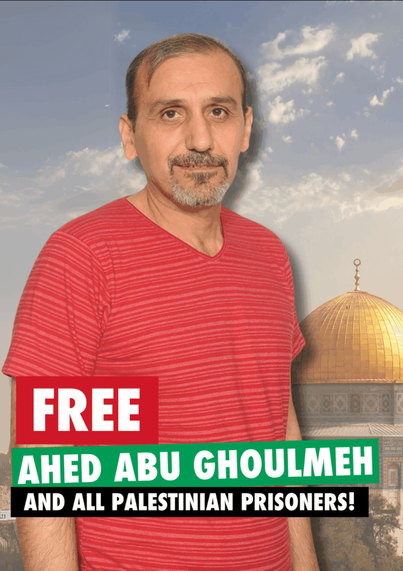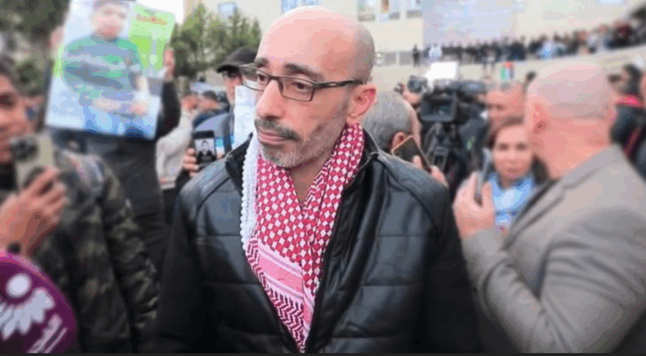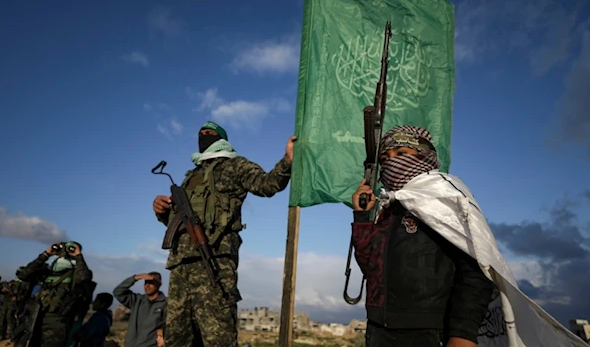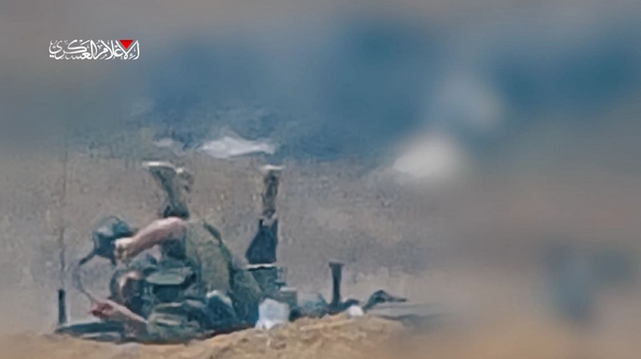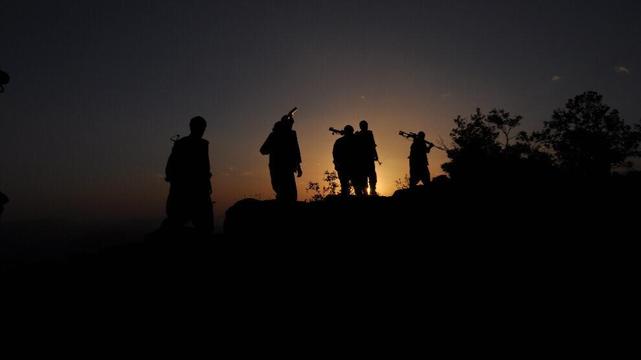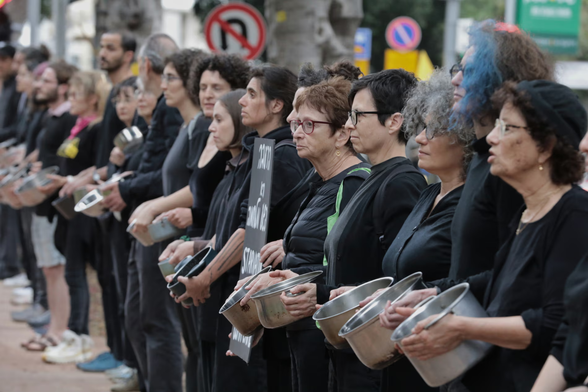International Workers’ Day 2025: The Workers’ Flood for Palestine, Against Genocide and Imperialism
“The sons and daughters of the popular classes of Palestine, the workers, the farmers in the villages, the refugees of the camps, have always been the leaders and the driving force of our Palestinian national liberation movement. The Palestinian popular classes have been the freedom fighters, the strugglers and the resisters on the front lines, confronting the occupation and Zionist colonization in Palestine. And so it is the case that the popular classes of Palestine fill the ranks of the Israeli prisons, the builders of the Palestinian prisoners’ movement continuing on the front lines of resistance, building the ongoing Palestinian revolution.” – Kamil Abu Hanish, imprisoned Palestinian struggler, 2017
This International Workers’ Day, 1 May 2025, is a day of workers’ struggle that comes amid the ongoing imperialist-Zionist genocide against the Palestinian people in Gaza and throughout occupied Palestine, as the war machine of capitalism and imperialism aims to grind the flesh and blood of the Palestinian people to fuel its plunder and profits around the world. International Workers’ Day also comes this year amid Al-Aqsa Flood and the ongoing resistance to Zionist-imperialist colonialism and genocide; let this day be a day for the workers of the world to join the people’s great flood against the common enemies of humanity.
On this International Workers’ Day, we salute the Palestinian workers, and the working people and popular masses of the region, who are those who create the ranks of the resistance, who form its popular cradle, who are imprisoned in the dungeons and torture camps of the occupier, and who are targeted for assassination, imprisonment and massacre for carrying out their work: civil defense workers, doctors, nurses and health workers, farmers, fishers, construction workers, aid workers, journalists and media workers, electricians, technicians, security workers, the teachers and domestic workers — all of those whose labor creates the structure of Palestinian society. We salute the workers of the resistance who toil with love and faith below the ground to manufacture the weapons that allow Palestine, Lebanon, Yemen and all of the forces of the resistance to defend themselves against the occupier, the imperialist and the genocidaire.
We salute the workers of Yemen, who set an example for the workers in the world in their popular, national and military mobilization that is shutting down the supply lines of genocide in the Red Sea. Today, Yemen, whose workers live under the bombs of the U.S. war machine, presents the greatest example to the world of the implementation of the boycott of the Zionist project and of upholding international law and its absolute prohibition against genocide.
We salute the dockworkers of Morocco, who despite the normalization regime, refused to load and unload the Maersk ships carrying the products of the U.S. war machine to arm the Zionist entity against the Palestinian people. We salute the strugglers of Palestine Action, who put their bodies and freedom on the line to shut down, damage and impose a cost upon the factories that manufacture the weapons of the imperialist-Zionist war machine, particularly Elbit Systems. We salute the tech workers who raise their voices and refuse to participate in the AI and surveillance products being used to target and massacre the Palestinian people and direct the bombs of death and destruction. We salute the Palestinian workers of UNRWA, who are fighting internal repression, criminalization, assassination and destruction to aid their people and defend their right to return. We salute all of those workers of the world who continue to strike and boycott, to confront normalization, to ensure their labour unions and international federations exclude the genocidal “Histadrut,” boycott Zionist bonds, and stand with the Palestinian people and their just cause. We salute the workers who face firing, repression and imprisonment around the world for standing up for Palestine and confronting the genocide.
We echo the call of the Masar Badil, the Palestinian Alternative Revolutionary Path Movement, to the Palestinian workers of the world: “We, the Palestinian workers in exile and diaspora, are part and parcel of the workers of the world. It is long past time to escalate our participation in this struggle to a material level that can shut down the trade routes of genocide, occupation and colonialism, cutting off the flow of weaponry, bombs and artillery that allows the Israeli regime to slaughter Palestinian men, women and children,” and that of the Palestinian General Federation of Trade Unions in Gaza to workers in the United States: “Your struggle for workers’ rights in the United States is inseparable from our struggle against occupation and colonialism. True labor solidarity is demonstrated through actions, not just words, and we count on your awareness and determination to take concrete steps to end this tragedy.”
This International Workers’ Day, we call upon the workers of the world to manifest their material solidarity with the imprisoned, massacred, targeted Palestinian workers under genocide, occupation and colonization, to confront the war machine of imperialism and capitalism, and to constitute an international popular cradle of the Resistance defending humanity by taking real, serious and meaningful collective action to shut down the workplaces, ports and factories that continue to fuel genocide. Examples already exist of the dockworkers in Morocco, South Africa, India, Sweden, Norway, Turkey, Italy, Belgium and even the ILWU on the United States West Coast refusing to handle the occupier’s cargo, shipped by ZIM, Maersk and other complicit profiteers of genocide.
The Zionist entity is an advanced base of U.S. and Western imperialism in the region, and it targets not only Palestinian workers, but the workers of the world. The road to the liberation of the international working class, the defeat of imperialism and capitalism, runs now, centrally and clearly, through ending the genocide, the victory of the Resistance, and the liberation of Palestine, from the river to the sea.
We know that the Palestinian workers in Gaza, with their minds and hands, will rebuild all that has been destroyed by the occupation, as they have many times over the years and indeed, the centuries. It is our responsibility to act now to bring about that new day.
On 1 May 2025, we call upon workers and labour organizations around the world to affirm clearly their position against genocide and with the Palestinian people through:
- General strikes, wildcat strikes and widespread workplace and civil disobedience against genocide and imperialist war crimes. Demand a complete end to the genocide in Gaza, the liberation of all Palestinian prisoners, and full boycott and divestment from all Zionist corporations and imperialist war profiteers complicit in genocide.
- Enforce and impose grassroots and popular sanctions — in the example of Yemeni workers — by refusing to handle the weapons shipments and cargo of ZIM, Maersk and their fellow war profiteers
- Boycotting the Zionist “labour” federation, the Histadrut, “Israel Bonds,” and complicit corporations and organizations
- Acting collectively to defend workers and students targeted for repression, firing, silencing and imprisonment for their action, organizing and speech for Palestine
(We have revised and updated the following text for International Workers’ Day 2025. All images are classic posters of the Palestinian revolution via the Palestine Poster Project.)
Palestinian workers and the popular classes have always played the key, leading role as the force of the Palestinian liberation movement, inside and outside Palestine. The prisoners’ movement is no exception; indeed, the vast majority of Palestinian prisoners come from the working and popular classes, the refugee camps and the villages, and it is these workers who put their bodies and lives on the line for freedom. Today, it is Palestinian workers and popular classes on the front lines confronting a genocidal assault for over 18 months, after 77 years of ongoing genocide.
Palestinian workers: A history of leadership in struggle
Palestinians have engaged in labor organizing from the early days of the 20th century, organizing unions, defending their work against Zionist attempts to exclude Palestinian labor from Palestinian land, and taking action to defend their rights as workers and as indigenous Palestinians.
General strikes have always been a key mechanism of Palestinian resistance, from the earliest revolts of the Palestinian people against British and then Zionist colonialism. In the 1936 revolution, Palestinian workers’ six-month general strike was at that time the longest in the world. This continued over the years, as Palestinian workers in exile built the Palestinian liberation movement and its organizations, and as Palestinian workers and labor unions led in the organizing of the first intifada. UNRWA workers and others in the Palestinian refugee camps in Lebanon paved the way for the modern revolution, as revolutionary leaders like Abu Maher al-Yamani organized refugees for liberation and return on the basis of their trade union work before the Nakba in Palestine.
In the 1950s, Palestinian labor organizers in occupied Palestine ’48 were jailed as they attempted to keep their organizations intact under martial law. At least seven Palestinian trade union leaders were deported from the West Bank between 1969 and 1979. These attacks happened as Palestinians inside Israeli jails fought to end forced labor, a victory that was achieved only through great sacrifice. Omar Shalabi, a Syrian prisoner, was killed under torture in October 1973 during the protests against Israeli forced labor.
Targeting and imprisonment of Palestinian workers
Palestinian workers are regularly subject to colonial forms of imprisonment, from the political targeting of workers’ organizations to the mass criminalization of Palestinians seeking employment inside occupied Palestine ’48. Palestinian workers are frequently arrested for “entering Israel without a permit,” despite the fact that many of these same workers are Palestinian refugees denied their right to return to their original homes and lands for the past 74 years. The systematic siege and subjugation of the Palestinian economy, from the texts of the Paris Protocols to the so-called “Abraham Accords” promoted by U.S. imperialism through their sponsorship of reactionary Arab regimes, has forced thousands of Palestinians to seek work with or without permits as day laborers, often in construction.
At any given time, there are approximately 1000 Palestinians arrested, detained or fined for seeking to work in their own homeland; they are not classified in the Israeli colonial system as “security” prisoners and are thus missing from the statistics related to Palestinian political prisoners in Israeli jails. However, it is clear that everything about these workers’ situation is deeply political – they are imprisoned for their Palestinian existence on Palestinian land, specifically as Palestinian workers. Palestinian workers from Gaza working in the West Bank — as well as those abducted from Gaza — have been subjected to the most extreme and severe forms of torture and abuse, from beating to rape and sexual assault to starvation and sleep deprivation — in the notorious prison and torture camps like Sde Teiman and Anatot.
Palestinian workers are subjected to ongoing abuse at checkpoints, systemic discrimination on the job from the river to the sea, and economic isolation, starvation and siege meant to compel workers into becoming construction workers and servants in illegal settlements. For over 18 years, the siege on Gaza has served as yet another attack on Palestinian workers. Even before the escalated genocide, the Gaza Strip had the highest levels of unemployment in Palestine due to the deliberate targeting of the Palestinian economy and its productive basis, including workers, fishers and farmers. Today, hundreds of thousands more have been forced into unemployment and are targeted daily for death and destruction.
There are currently over 10,000 Palestinian political prisoners jailed by the Zionist regime, including over 3,600 jailed without charge or trial under administrative detention. Confronting torture, abuse and starvation inside the Zionist jails, which has led to the martyrdom of over 65 prisoners over the past 18 months, the Palestinian prisoners are on the front lines of Palestinian resistance on a daily basis. They are leaders in the Palestinian, Arab and international camp of resistance — and like the freedom fighters and martyrs of Palestine, they represent the workers and popular classes of Palestine, those who face multiple forms of exploitation and oppression at the hands of the Zionist regime. The liberation of the prisoners is so precious to the Palestinian people and their resistance that it was a central goal of Al-Aqsa Flood and the great crossing of struggle. Freedom for Palestinian prisoners is essential to the liberation of the Palestinian working class and popular masses — the central feature of the liberation of Palestine from imperialism and Zionism, from the river to the sea.
The Histadrut: A colonialist entity that must be boycotted
The drive to exclude Palestinian workers has always been part of the Zionist colonial project. This has been reflected in the founding principles and continued operation of the Israeli Histadrut, a trade union federation founded with the explicit purpose of promoting Zionist colonization of Palestinian land and excluding Palestinian labor. Despite having a fraternal relationship with the AFL-CIO and other major labor unions worldwide, it actually exploits Palestinian workers inside “Israel” by deducting fees from their salaries while denying them benefits, let alone its ongoing and systematic role as part of the Zionist-imperialist machine of genocide. Its role predates the Nakba and continues to reflect this colonial relationship. Today, it must be more clear than ever: any relationship with the Histadrut is complicity in genocide, and those responsible for complicity in genocide must be held accountable — first and foremost, by the workers.
Palestinian workers in exile and diaspora fight back
Palestinian workers in exile also continue to struggle against exploitation and oppression. In Lebanon, amid the targeting of Lebanon, its people and its Resistance by the Zionist attacks that daily violate the ceasefire, the imperialist powers and financial exploiters, Palestinian refugees continue to be denied access to numerous professions, leading to massive unemployment and frequent despair among the working class. Palestinian refugees forced to flee to Europe, North America and elsewhere from Lebanon, Syria and occupied Palestine confront racist, repressive policies that inhibit their right to work and threaten them with deportation, detention and exclusion.
They confront the racism of “Fortress Europe” and criminalization of refugee workers alongside fellow migrants and workers seeking safety and refuge from the military, social, environmental and economic disasters forced upon their home countries by the very imperialist states that then deny their rights. They face severe exploitation in black market labor. Still, these workers continue to struggle despite all odds not only to confront racism and exclusion in the imperialist countries but also to organize to confront imperialism and win their liberation. Palestinian workers are marching in, leading and organizing the demonstrations that took massively to the streets of the world to confront the genocide and stand with the Palestinian people, and are the first to be targeted for these actions by police and state repression. Workers around the world, and particularly in the imperial core, have been fired, dismissed and imprisoned because they speak out for Palestine, and Palestinian workers in exile and diaspora have been among the foremost examples. Inside and outside Palestine, the workers and popular masses are protecting Palestine and pushing the struggle forward, without compromise.
Confronting imperialism, Arab reactionary regimes and the Oslo Palestinian Authority
Zionist genocidal colonialism reflects the sharpest edge of capitalist exploitation for the Palestinian working class, backed up fully by the most powerful and dangerous imperialist powers, especially the United States. However, they also face Arab reactionary regimes, such as Jordan, Egypt and the United Arab Emirates, that are complicit with the exploitation and marginalization of Palestinian workers even as they are complicit with the genocide of the Zionist regime through normalization and direct participation. Palestinian workers are exploited by the ruling class of these states directly in exile and diaspora as well as through their direct engagement with and promotion of the colonial economy of Zionism, and Arab workers are themselves threatened with imprisonment and harsh repression when they take action to defend the Palestinian people.
Palestinian workers also confront Palestinian capitalists and the Palestinian Authority, formed as a security subcontractor to the Israeli occupation. The Jordanian monarchy acted in the 1970s and 1980s to repress union organizing in the interests of Palestinian capitalists, while ultra-wealthy Palestinian capitalists like Bashar al-Masri are on the first lines promoting normalization and undermining the boycott of Israel.
Imperialism is on the attack around the world, using its military might and its weapons of siege and sanctions against peoples around the world. As always, it is workers and the impoverished classes who bear the heaviest brunt of these assaults. Fighting back against imperialism, including U.S., Canadian and EU sanctions on Venezuela, Cuba, Iran, and indeed, nearly one-third of the world, in addition to its direct involvement and armament of genocide, its bombing of Yemen, its military interventions, warmongering and ongoing violent attacks on all forms of resistance to imperial domination, is essential to building the movement for Palestine.
A call to the workers’ movements of the world
On International Workers’ Day, we once again amplify the words of Kamil Abu Hanish, speaking from Israeli prison, urging the escalation of the boycott movement: “Today, we call upon you, the fighters for freedom and justice in the world, the workers’ movements, the strugglers for socialism, the movements of revolution, to escalate your support for our struggle, for the Palestinian people and for the Palestinian prisoners. We urge you to act to isolate the occupation state, to hold it accountable for 70 years of crimes against the Palestinian people…The workers’ movements, the movements of the popular classes, the movements of the oppressed, can and must take part in this battle around the world, as part and parcel of the struggle against racism, imperialism and capitalism.”
International workers’ solidarity with Palestine has a long and proud history, including in the heart of the imperial core. See, for example, in the United States — the leading sponsor of the Zionist regime, together with its imperialist partners in Britain, France, Canada, the Netherlands, Germany, Italy and elsewhere — the important role of Black and Arab autoworkers who struck in 1973 in Detroit against their union’s purchase of “Israel Bonds.” Today, amid the ongoing genocide in Palestine, as the bombs create belts of fire, as dozens of Palestinian workers are martyred daily, this moment is perhaps more urgent than ever.
We also express our solidarity with the struggling workers of the world, including the imprisoned labor union and workers’ movement leaders who are held behind bars or face death threats and repression for their role in defending oppressed workers. From India to the Philippines to France, from Colombia to Egypt and Morocco, we stand with these labor movements targeted for repression. The liberation of Palestine is fundamentally linked to the liberation of all from imperialism, exploitation and capitalism.
On International Workers’ Day, these struggles must become an occasion to escalate our work to support Palestinian workers, end the genocide, uphold the resistance, free the prisoners, and liberate Palestine, from the river to the sea.
https://abolitionmedia.noblogs.org/?p=18848
#colonialism #imperialism #mayDay #palestine #palestinianAuthority #prisonStruggle #samidoun #westAsia #workers
